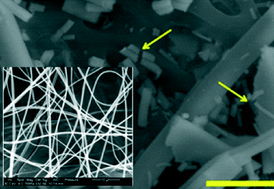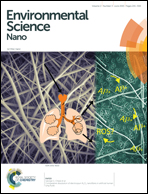Comparative dissolution of electrospun Al2O3 nanofibres in artificial human lung fluids
Abstract
Sub-micron sized alumina fibres were fabricated by electrospinning and calcination of a polymer template fibre. In the calcination step, different controlled temperature heating cycles were conducted to obtain fibres of different crystalline structures. Their biodurabilities were tested at pH 7.4 with lung airway epithelial lining fluid or serum ultrafiltrate (SUF) and at pH 4.5 with macrophage phagolysosomal simulant fluid (PSF). Potential to generate free radicals was tested in vitro. Through the variation in the soak temperature from 650 °C to 950 °C (experiments S650–S950), the heating protocol affected the morphological characteristics, crystal structure, surface area, and density of the alumina fibres while their dissolution half-times were not significantly affected in SUF or PSF. Fibre samples formed at different heating ramp rates (experiments R93–R600) showed significant variation in the dissolution rates with the highest ramp rate corresponding to the highest dissolution rate. Thus, by increasing the calcination temperature ramp rate the alumina fibres may be produced that have reduced biodurability and lower inflammogenic potential. The fibres with the highest dissolution rated had the least aluminium content. The solubility half-times of the alumina fibres were shortest for fibres calcined at the fastest temperature ramp rate (though soak temperature did not have an effect). The ramp rates also affected the aluminium content of the fibres suggesting that the content may affect the structural strength of the fibres and control the dissolution.


 Please wait while we load your content...
Please wait while we load your content...